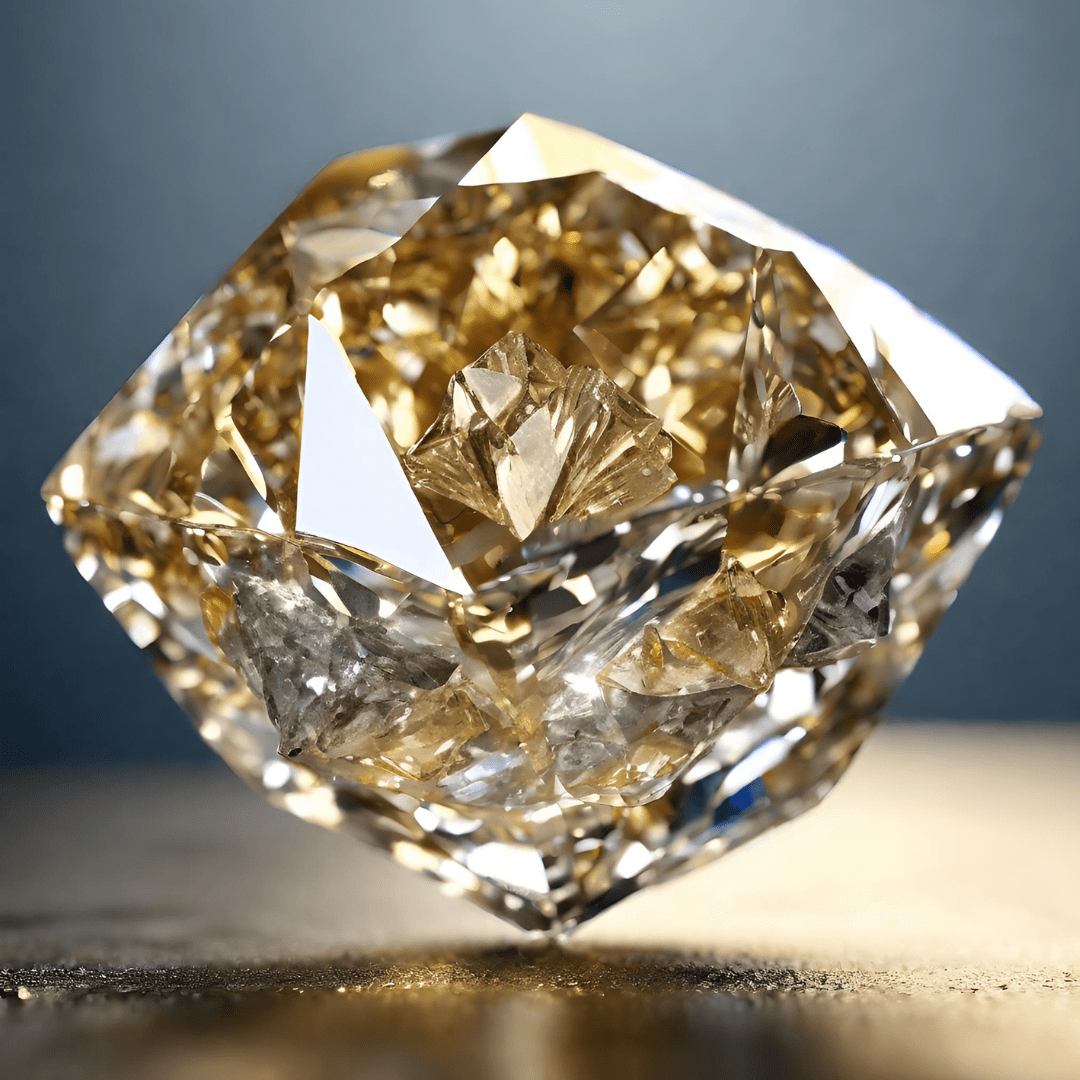Blog entry by eran b

Diamonds have held a place of prestige and desire for centuries. Their brilliance, durability, and symbolism of love and commitment have solidified their position as a cornerstone of luxury. However, the traditional diamond industry has faced scrutiny for its environmental impact and ethical concerns. This has led to the rise of lab-grown diamonds, sparking a question that lingers in the minds of many consumers: Are lab-grown diamonds real diamonds?
This blog post delves into the science behind lab-grown diamonds, explores their similarities and differences compared to mined diamonds, and ultimately answers the question of whether they can be considered "real."
Unveiling the Science: How Lab-Grown Diamonds are Created
Lab-grown diamonds are not mere imitations; they are genuine diamonds crafted in controlled laboratory settings. The most common method used is Chemical Vapor Deposition (CVD). This process meticulously replicates the natural diamond formation process, but under much faster and more controlled conditions. Here's a simplified breakdown:
- The Seed: The process begins with a tiny diamond seed, typically a sliver of a natural or lab-grown diamond.
- The Chamber: The seed is placed inside a sealed chamber filled with a low-pressure, hydrogen-rich gas mixture.
- Activation Energy: An energy source, such as microwaves, lasers, or a hot filament, activates the gas molecules, breaking them down into individual carbon atoms.
- Building Block by Block: The freed carbon atoms are attracted to the diamond seed and begin to bond with it layer by layer, replicating the diamond cubic structure – the same structure found in natural diamonds.
- Precise Control: Throughout the process, temperature, pressure, gas composition, and the energy source are carefully controlled. This allows for the creation of diamonds with specific characteristics like size, color, and clarity.
Nature vs. Nurture: Similarities and Differences
Lab-grown diamonds share many key characteristics with their mined counterparts:
- Chemical Composition: Both lab-grown and mined diamonds are composed entirely of carbon atoms arranged in the same diamond cubic structure.
- Physical Properties: They exhibit the same exceptional hardness, brilliance, fire (light dispersion), and durability.
- Grading System: Both types are graded using the same GIA (Gemological Institute of America) or IGI (International Gemological Institute) diamond grading system for cut, color, clarity, and carat weight.
However, there are also some subtle differences:
- Origin: Lab-grown diamonds are created in controlled environments, while mined diamonds are formed naturally deep within the Earth over millions of years.
- Trace Elements: Mined diamonds may contain trace elements depending on their geological origin, while lab-grown diamonds typically have fewer inclusions and a more consistent chemical composition.
- Growth Patterns: The growth patterns of lab-grown diamonds can sometimes be slightly different from mined diamonds, which can be detected by a trained gemologist using specialized equipment.
Beyond the Sparkle: The Ethics and Sustainability Debate
The rise of lab-grown diamonds has been driven by a growing consumer awareness of the environmental and social issues surrounding traditional diamond mining. These concerns include:
- Environmental Impact: Large-scale mining operations can have a devastating impact on the environment through land degradation, water pollution, and air pollution.
- Ethical Sourcing: Concerns exist about conflict diamonds (diamonds mined in war zones and used to fund violence) and unfair labor practices in some mining regions.
Lab-grown diamonds offer a more sustainable and ethical alternative. They eliminate the environmental impact of mining and ensure ethical labor practices throughout the creation process.
So, Are Lab-Grown Diamonds Real?
Here's the answer: From a scientific standpoint, lab-grown diamonds are undeniably real diamonds. They possess the same chemical composition, physical properties, and optical brilliance as their mined counterparts. The only significant difference lies in their origin – a controlled laboratory environment versus the Earth's crust.
The Federal Trade Commission (FTC) recognizes this reality. In 2018, they issued a revised diamond disclosure stating that "a diamond is a diamond, no matter whether it is mined from the earth or created in a lab."
Ultimately, the decision of whether to choose a lab-grown or mined diamond rests with the individual consumer. Both options offer stunning and durable gems, but lab-grown diamonds provide a more sustainable and ethically sourced alternative.
Beyond the Binary: A Future of Choice
The distinction between "real" and "lab-grown" diamonds may become increasingly blurred as technology advances. The future may hold even more innovative processes for diamond creation, offering consumers a wider range of options based on their preferences for ethical sourcing, environmental impact, and budget. As the diamond industry evolves, consumers will have the power to choose diamonds that not only sparkle but also align with their values.
